Last Updated on August 26, 2022
Let’s clarify our terminology right from the start. The term “warped brake rotor” is somewhat misleading.
Warping would be a change in the geometric shape of a rotor. Brake rotors do not change shape; they do not geometrically warp. Here’s why…
How Brake Rotors Are Created
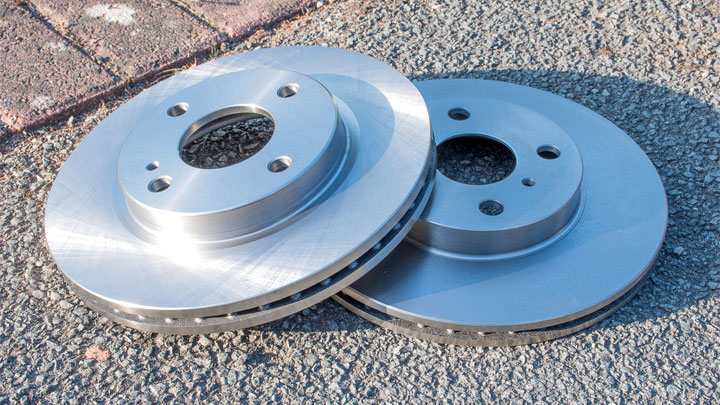
The manufacturing procedure for most rotors is a casting process which starts with a molten steel or iron alloy being poured into a mold. Once it gradually cools and hardens, the rough rotor casting is removed from the mold and finish-machined to the appearance you will see when the rotor is brand new.
This process trues up the rotor surfaces to the mounting face on the rotor hub. Mounting holes or alternate means of attachment are added as well. The new rotor will be spun and dynamically balanced.
The new rotor may then be plated with an anti-rust coating. It will also be rust-proofed with a tacky preservative oil and placed in a sturdy box. Then it gets shipped off to the car manufacturer, to a car dealer or to your local parts store. Once the rust proofing is removed the rotor is ready for installation on your car.
Because the basic structure of a brake rotor derives from the initial casting process accomplished at a very high temperature, a brake rotor will never warp. It simply will never reach the temperature necessary to weaken the material and permit warping. So when we have brake problems we may think we have a warped rotor, but what is this problem, really?
Note that throughout this article we will repeatedly use the term “warped rotor” to refer to rotors that have the degraded condition and qualities we will describe below.
What Is a Warped Rotor?
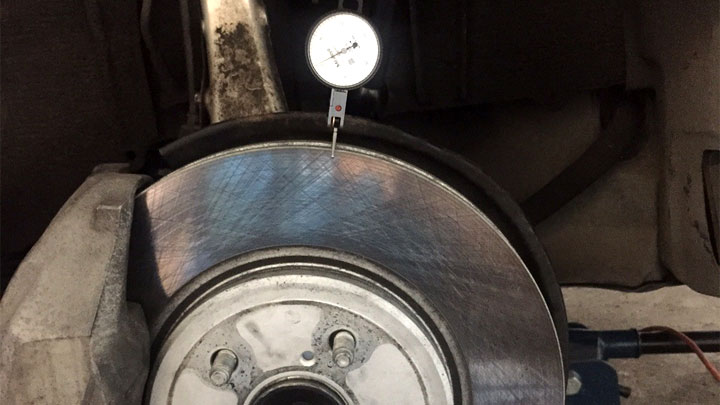
During use of the brakes on your vehicle, the brake pads are continually wearing away. The rotors wear as well but not as rapidly as the pads.
In this process, the brake pad material will transfer a very durable coating to the rotor consisting of the complex resins that hold the pad friction materials together. Normal driving and brake usage enables these resin deposits to be applied evenly and smoothly to the rotor surface. They are microscopic and invisible to the naked eye.
Your rotors, if functioning properly, will always look shiny and smooth with this uniform resin plating and may also display a circumferential pattern of extremely fine ridges.
It is the adverse plating of the rotors with pad resins that can produce the effects we might refer to as a warped rotor. The plating can be uneven and of varying heights giving thickness variations to the rotor surface. This can be evaluated using a depth gage affixed to nearby solid structure.
The rotor surface could then be measured as the rotor is turned by hand. A height variation in excess of .002 inch (0.051 mm) will be sufficient to cause the sensation of a warped rotor when braking.
And for some cars a variation in rotor thickness of even less than this limit will give signs to the driver that the rotor (or rotors) are warped.
See Also: 6 Causes of Uneven Brake Pad Wear
Signs of a Warped Brake Rotor
The condition often mislabeled as a warped rotor is evidenced by one of these annoying brake behaviors.
#1 – Brake Squeal

The brakes may squeal intermittently during a gentle stop.
#2 – Car Vibrates When Braking
The car fails to stop smoothly but pulsates (vibrates) during gentle braking. You can feel this subtle shaking through the seat.
#3 – Steering Wheel Shakes
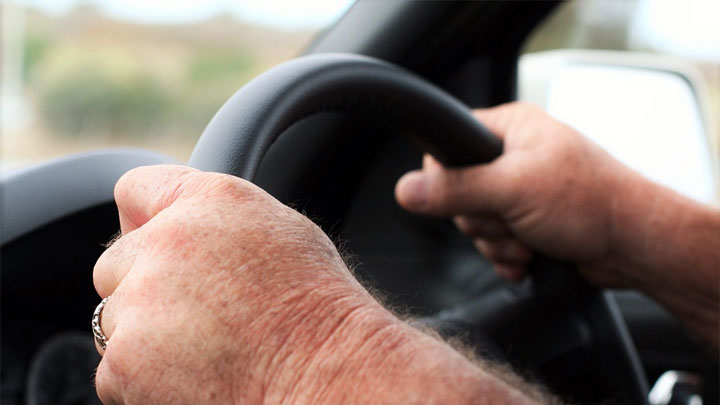
If a front brake rotor is warped, the steering wheel will pulsate or vibrate during stopping. This vibration will decrease in frequency as the car slows down.
#4 – Vehicle Pulls to One Side
The car may pull to the right or left side while stopping. This can be extremely dangerous in heavy traffic.
#5 – Brake Rotor Surface Looks Inconsistent
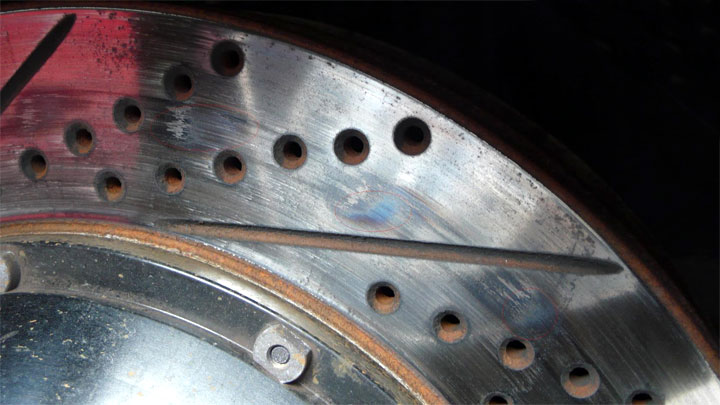
If checked visually, one or more rotors may lack a smooth shiny appearance. Instead each may display an uneven pattern of dark and light regions or patterns of a bluish-to-black color indicative of local overheating.
#6 – Braking Performance Worsens Over Time
A mildly affected rotor will function normally when a quick stop is necessary. However, the condition over time will worsen and eventually such a rotor (or rotors) may not provide a powerful stop when needed.
What Causes Rotors to Warp?
This adverse plating of the rotor surface can occur during any one of these events:
#1 – Hard Braking
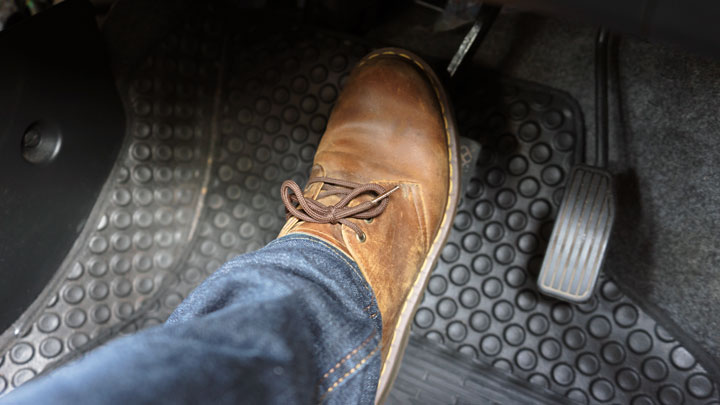
Extremely hard braking such as an emergency deceleration from freeway speeds followed by suddenly stopping the car on the highway shoulder. The motionless but hot rotors against the hot brake pads can allow a pad-shaped patch of resin to be transferred to each of the rotor surfaces.
If the brakes are allowed to cool, this resin will harden and become very difficult to wear away during subsequent driving.
This is an extreme event and probably rare for most drivers. One thing to remember during freeway driving is this: if a hard deceleration is needed (to evade a collision, for example), if at all possible do not make an immediate stop. Continue to drive for at least five miles to allow the brakes to cool.
While on that freeway, if you are stopping for a rest or overlook area, slow down gently if possible. Your car will be parked for a while at such a stop, and you don’t want it to be sitting there with really hot brakes.
#2 – Stop-and-Go Traffic
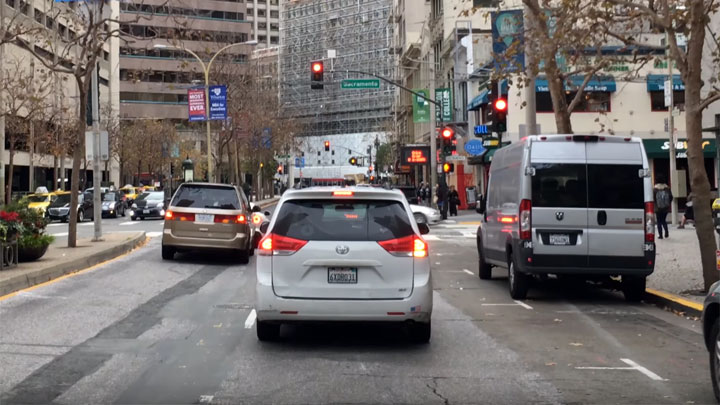
Frequent stop and go driving from 35 mph or faster, that might typify your drive home from work followed by zero time spent at constant speed to allow your brakes to cool.
Such driving day-to-day, will gradually build an uneven accumulation of hard resin on the brake rotors which can lead eventually to warped rotor behavior. This condition will be limited to the front brakes which do most of the work stopping your vehicle.
#3 – Long, Steep Descents
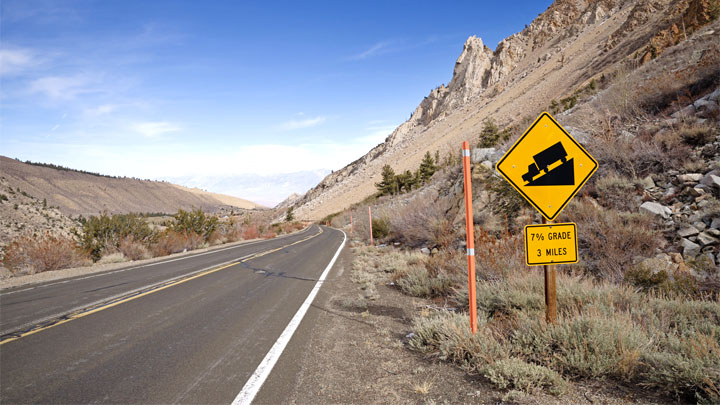
Long descents down steep mountain roads can contribute to rotor warping. For example, the eastbound descent down I-70 in Colorado from El Rancho to the outskirts of Denver comes to mind or the descent down the auto road from the top of Mt. Washington in New Hampshire.
Think for a moment of your scariest downhill run. You will be using your brakes to control speed. By all means, take advantage of the brake cooling turnouts, if available, but keep your stops short and resume driving as soon as conditions permit.
Continuing to drive enhances uniform rotor cooling, and this will minimize the hardening of pad-to-rotor deposits.
To summarize, a warped rotor is one that has been surface damaged by one or more of the above events. The resulting deposits create an uneven thickness of the rotor.
This condition will worsen with time because the thick coated areas of the rotors will grow much hotter during braking than the lower areas causing additional build up of pad resins.
How To Tell Whether the Front or Rear Rotors Are Warped
If the front rotors are warped, you will sense the pulsation or vibration through the steering wheel.
If you feel this pulsation through the car seat but the steering wheel is not vibrating, the rotor problem is likely at the rear wheels.
However, warping of the rear rotors is less likely than at the front because the fronts become much hotter than the rears while stopping. So the risk of pad resin transfer is higher for the front rotors.
Are Warped Rotors Dangerous?
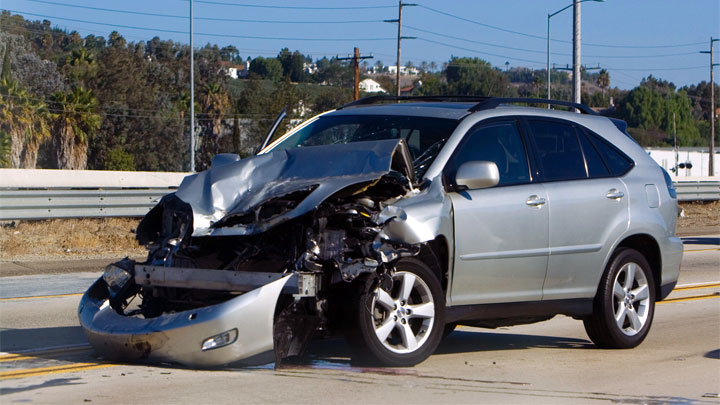
Any condition that adversely affects your brakes can be dangerous. Warped rotors can degrade the stopping efficiency of your brakes resulting in longer stopping distances. This is an adverse outcome which could end with a collision.
Any time you sense pulsating during deceleration when applying the brakes should be cause for concern. A trip to your dealer or mechanic for evaluation and corrective action should soon follow.
This pulsating condition during stopping can also cause increased wear on the suspension and steering systems. Such wear will be cumulative over time and will add cost to needed repairs if the warped rotor problem is not soon corrected.
Can Bedding-in the Pads Correct the Warped Rotor Behavior?
When first noticed, a mild amount of brake pulsations can sometimes be corrected by repeating the new brake pad bedding procedure. This procedure is explained in Step 16 of our “How to Change Brake Pads” article.
If this procedure fails to correct a brake pulsation problem, having the rotors resurfaced or replaced will be required.
Can Warped Rotors Be Resurfaced? (Or Should They be Replaced?)

If there is sufficient material thickness on the rotors, they can be resurfaced. And this will correct the warped rotor problem.
For more information on this process and how to choose resurfacing or replacing the rotors, please refer to this article: https://cartreatments.com/resurfacing-vs-replacing-brake-rotors/
Do not disregard the need to bed-in the rotors as discussed above once they are either resurfaced or replaced.




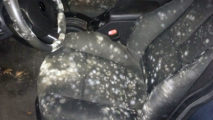
Loved all that you shared in this post!
I have a 2015 Subaru Impreza, and getting a lot of vibrations in the pedals when I brake.
I took off the wheel and put a ruler next to the rotor to see if it was warped, but I could not spot any problems.
Could my rotors still be warped enough (but not enough to be detected by the naked eye) to cause vibrations? If not the rotors, what else should I check?
I’m afraid that test will not be adequate for detecting excessive runout (which is what most people mean whey they say the rotor is “warped”).
It’s also possible you have an uneven distribution of pad material on the rotors. This can happen when the brakes get hot, then you park and immediately put the parking brake on. The rotors will cool unevenly, and you may get extra pad material build up underneath the brake pads.
All this to say: don’t rule out an issue with the rotors just yet. It might be wise to have a shop check your rotors, and feel what you’re feeling under braking.
I took my car to the mechanic. He said that my rotors weren’t warped. They just had an uneven brake pad deposited on them. And I fixed it :D.
Thanks for your help, Sean!
Happy to help, Elena! Thanks for sharing the resolution with us.